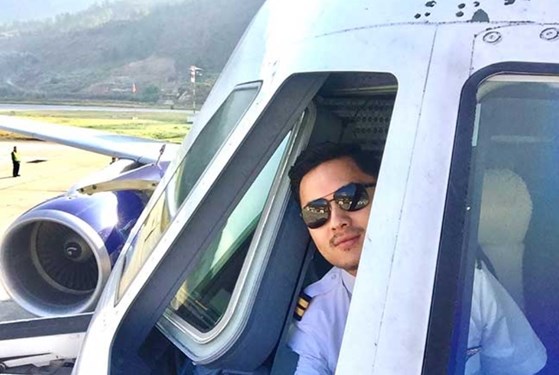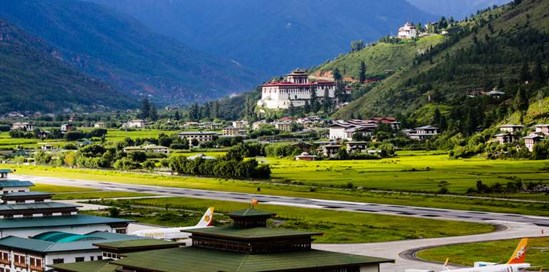Is it really the most dangerous flight landing in the world, where few pilots are qualified to fly into the Land of the Thunder Dragon? We speak to a Drukair pilot to set the record straight once and for all.
Firstly, there’s no radar to guide planes into Bhutan’s Paro International airport.
Next imagine navigating around a long, winding, narrow valley surrounded by mountains as high as 18,000 feet, the pilot flying entirely on manual mode (with sheer experience!).
Finally, while most airports offer at least 10 nautical miles (that’s about 18km) of distance for pilots to gauge the most aligned approach onto the landing strip, this airport accords just one to two nautical miles – which literally means that there’s absolutely no room for error.
We are talking about the flight in and out of the Paro International Airport, the main gateway into the Land of the Thunder Dragon.
If the flight into Bhutan commands great skills, you must be wondering what goes on inside the cockpit?

Well, we caught up with Namgyal Wangchuk, Senior First Officer with Drukair, Royal Bhutan Airlines for the ‘real story’ behind landing into Paro.
1) It truly is one of the ‘most challenging’ flights in the world.
To put it simply, what makes it a challenge to fly into Paro is mainly due to the rough terrain that surrounds the Paro International Airport.
The mountains can be as high as 18,000 ft. In contrast, the airport lies at an elevation of 7,364 ft.
Technically, this affects and restricts the performance of the airplane. A pilot who is navigating a mid-sized jet would require more space and time to make critical decisions during take-off and landing.
2) Half Changi Airport’s runway length, and you’ll have an idea of Paro Airport’s tight landing strip.
Another factor that makes flying into Paro unique and challenging is the length of the runway. It’s only 7,431 ft long (compared to Changi Airport’s 13,123 ft), and all the above factors demand the pilot to be very precise when landing.
3) Planes can always land on auto pilot mode, right?
Not for the approach into Paro. We do have our own company procedures for landing that has been designed by our experienced captains and plane manufacturer.
It dictates what speed and altitude we’ll have to be at each checkpoint while approaching descend. I won’t go into detail as it’s quite technical!
4) If pilots can’t fly manually with confidence, then Paro International Airport is out of the question.
Other international airports have a technology called an ILS (Instrument Landing System) which guides the aircraft laterally and vertically in an approach to landing.

But in Paro, the descent is always manually flown and we have just one VOR (Very high frequency Omni-directional range) equipment to guide us.
5) You’ll never find anyone with red-eyed flights into Bhutan.
All flights into Paro are limited to Visual Meteorological Conditions only. This means that there must be sufficient visibility of other aircrafts and the surrounding terrain. Bhutan bound flights are thus restricted to daylight hours, so night flying is not possible!
6) Think the views of the Himalayan Alps are mesmerising? Wait, there’s more.
As you might have heard, our country has been preserving its forest cover so when we fly in, we’re very close to the mountains which lets you in on an amazing view.
Nearing the airport, the rice fields are always changing in colours according to seasons, so that’s quite an experience too.
7) Yes, Drukair has expatriate pilots too!
There used to be very few international pilots with Drukair, but now that the aviation sector in Bhutan in general is growing rapidly. Currently, we have 25 Bhutanese pilots as well as a crew of 10 expatriate pilots.
Conclusion About Facts You Never Knew About Flying Into Bhutan
Flying into Bhutan is an adventure with our Bhutan travel packages. Plan your visit by understanding the best time to travel to Bhutan and the Bhutan travel cost. For a premium experience, explore our luxury travel in Bhutan offerings. If you're coming from Malaysia, check out our guide on travel to Bhutan from Malaysia for more information. Druk Asia, the best Bhutan travel company, ensures a seamless travel experience.
